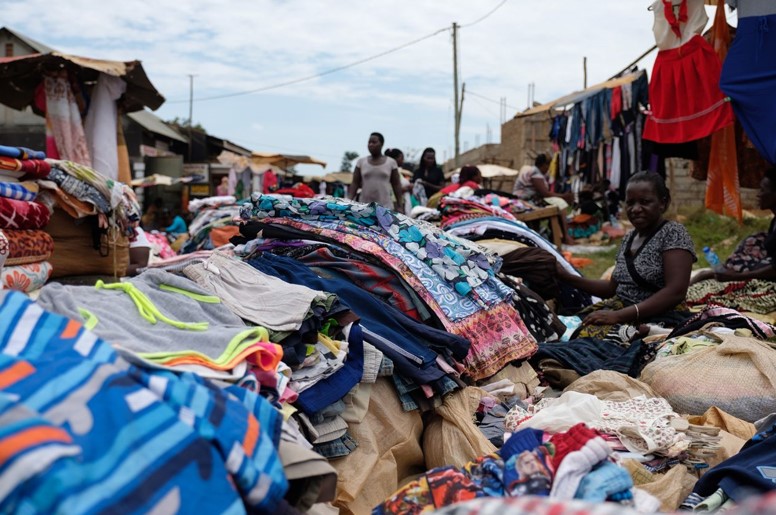What Uganda’s war on second-hand clothes means for fashion
Post By Diaspoint | September 27, 2023

In 2018, fashion designer Bobby Kolade moved from Berlin back to Uganda’s capital Kampala with the ambition of creating a home-grown fashion brand using Ugandan cotton.
Things didn’t work out quite the way he imagined. Though the raw material is one of the country’s key export crops, Uganda’s textile industry has struggled since the 1970s. The country had just two textile mills that could process cotton fabrics.
So Kolade turned to something that was available in abundance: second-hand clothes. In his Kampala studio, old clothes are washed, picked apart and transformed into paneled dresses and patchworked sweats for his Buzigahill brand. Under his tongue-in-cheek “Return to Sender” concept, those designs are then sold back to the countries that originally discarded them.
It’s a subversive move designed to highlight and reclaim a local clothing industry that has suffered from a flood of second-hand clothes and cheap imported textiles from countries like Turkey and China.
But Kolade’s efforts to build a new kind of fashion ecosystem operates on the fringes of a broader and increasingly politically fraught global debate over what happens to fashion’s growing waste footprint, and who ends up paying for it.
The politics of second-hand fashion
Late last month, Uganda’s President Yoweri Museveni announced a plan to ban used clothing imports to the East African country in a speech, saying the trade stifles the development of the local textile industry.
“I have declared war on second-hand clothes to promote African wear,” the President said during the opening of 16 factories at an industrial park late last month, according to Ugandan newspaper Daily Monitor.
Read More from original source
